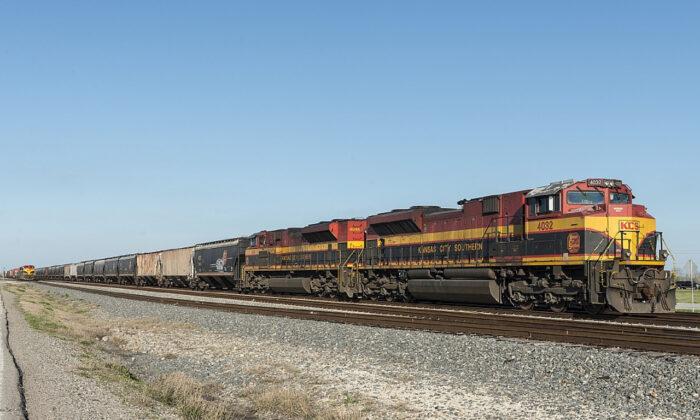A product’s path from manufacturer to store shelf is currently an obstacle course of chokepoints within the interconnected global supply chain, and U.S. rail is among the industries feeling the pinch.
U.S. railroads moved 1,167,682 carloads of freight in September 2021, the Association of American Railroads Weekly Rail Traffic Report shows. That’s up 4.3 percent compared to September 2020, the year marked by deflated business numbers caused by global COVID-19 shutdowns. But compared to the more normal September 2019, the 2021 rail carloads are down 5.8 percent.
Likewise, some other rail traffic categories showed improvements compared to 2020, but have not rebounded back to 2019 carload counts, including coal, chemicals, primary forest products, and the category “crushed stone, sand, and gravel.”
“Rail intermodal volume is clearly not what it has been and could be,” AAR Senior Vice President John T. Gray said in a statement. “Keeping intermodal terminals functioning smoothly and at full capacity depends on consistent freight outflows to make room for new freight inflows. Unfortunately, due to limited availability of downstream truck and warehouse capacity, that’s not happening right now with predictable impacts on rail intermodal volume. There is no single solution to this problem, but railroads are bringing intermodal yard capacity back online to increase storage availability as well as working with customers and truckers to accelerate container pickup among other efforts.”
Most disruptions facing the U.S. supply chain today are outside of railroads’ control and have impacted rail operations, an August 2021 AAR educational sheet explains.
It blames lingering trade disputes; shuttered global manufacturing due to the pandemic; a lack of shipping containers; a surge in imports; weather events; scarcity of trucks, container chassis, and truck drivers; congested ports, and a lack of enough warehouse storage space.
“No single solution by any segment of the freight logistics chain will solve the current situation,” Jessica Kahanek, AAR media relations director told The Epoch Times in an email.
Here are some of the ways the rail industry says it is working to increase capacity:
● Stepping up coordination across railroads in busy rail hubs to better manage the flow of traffic and anticipate potential problems. ● Reopening older, shuttered terminals to increase capacity. ● Restoring services impacted by weather as quickly and efficiently as possible. ● Rapidly recalling rail workers who were furloughed during the pandemic. ● Maintaining idle locomotives so that they can be quickly brought back online. ● Working with trucking partners to move shipments from terminals as quickly as destination warehousing capacity becomes available. ● Ramping up the hiring of new train operating employees in key markets to handle increased and unpredictable shipping demand. ● Providing bonuses to workers who provide referrals for new hires.






Friends Read Free